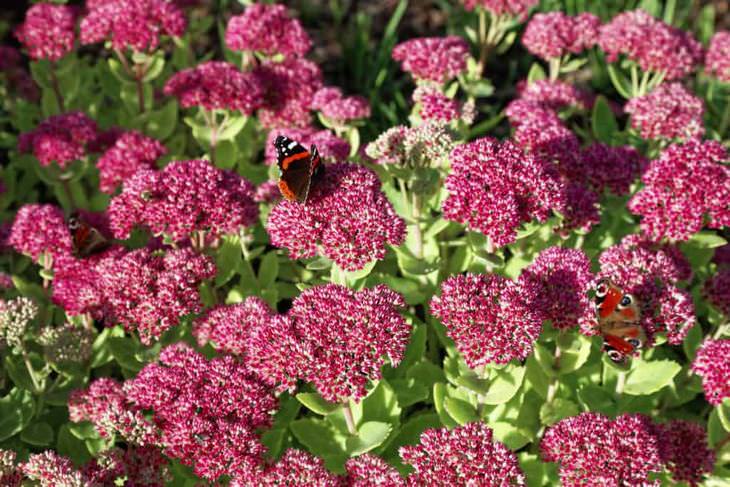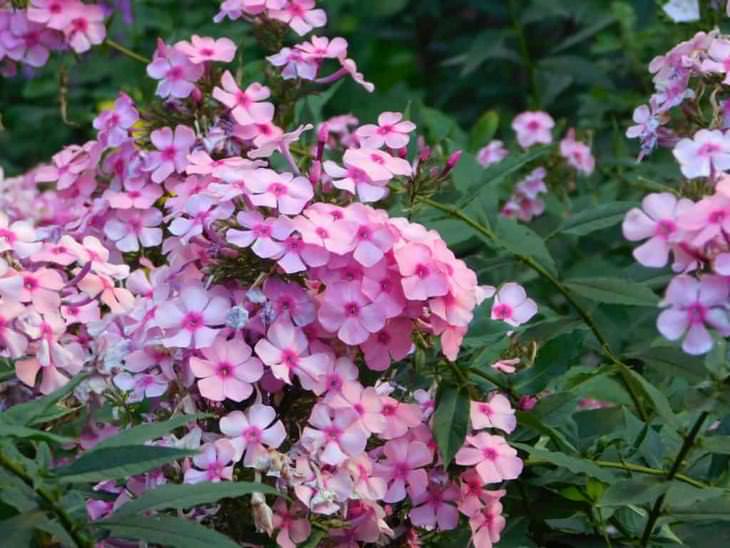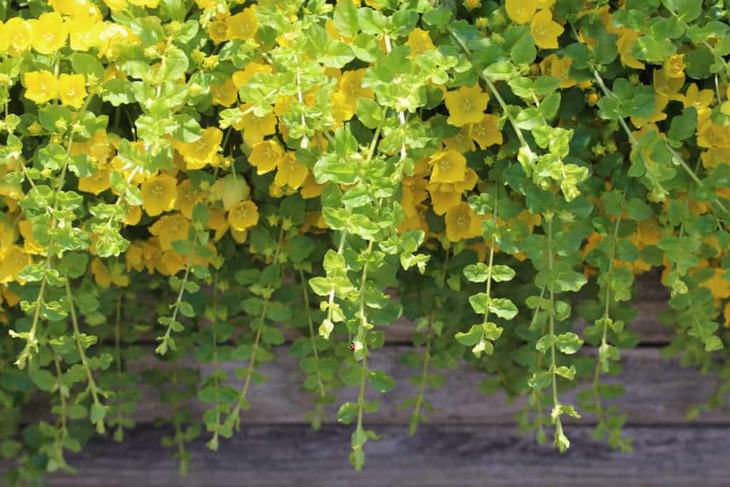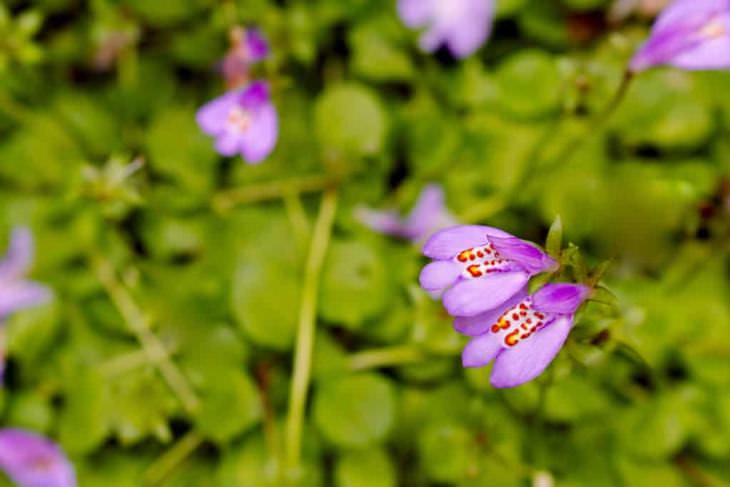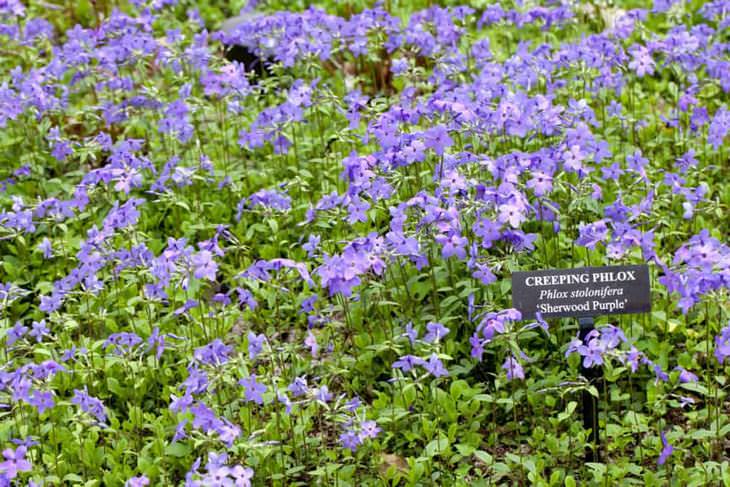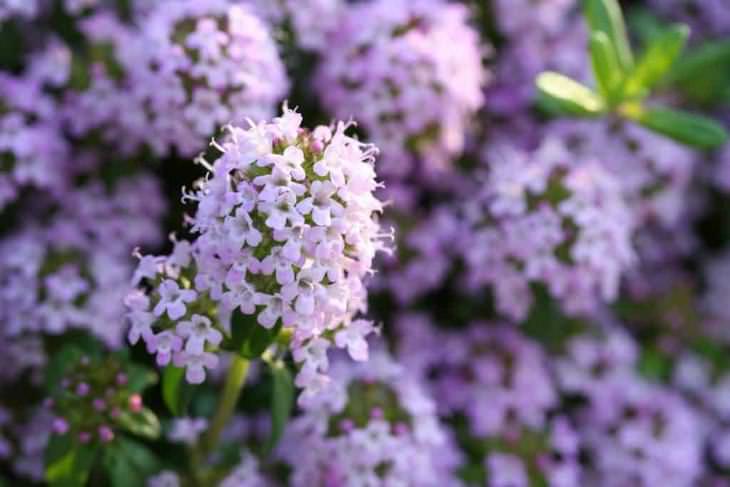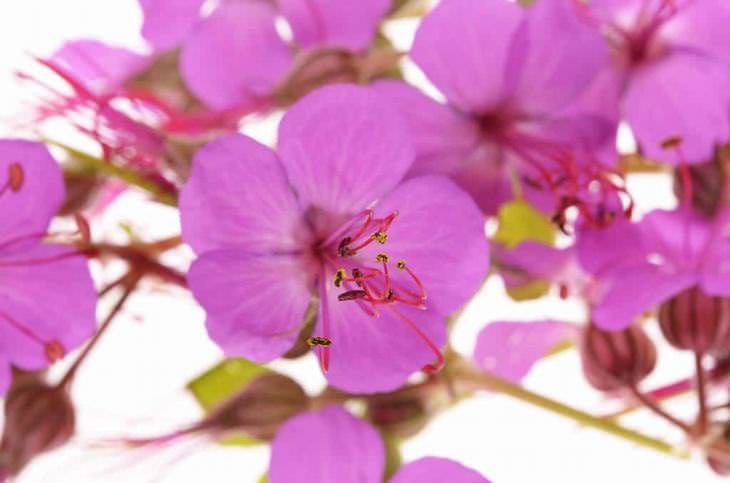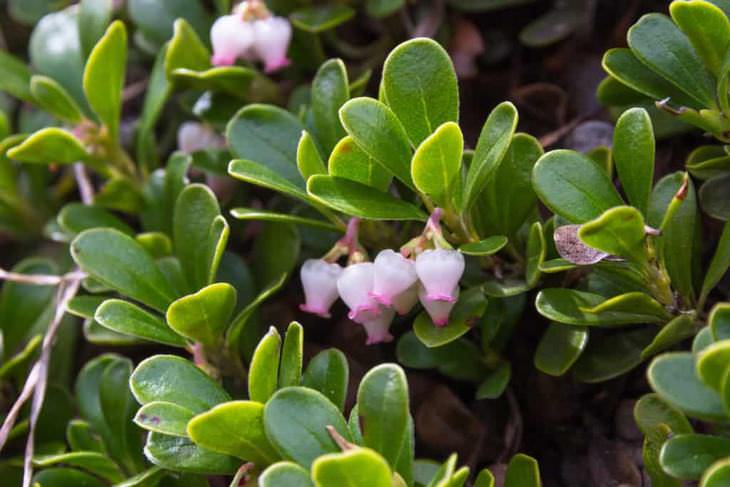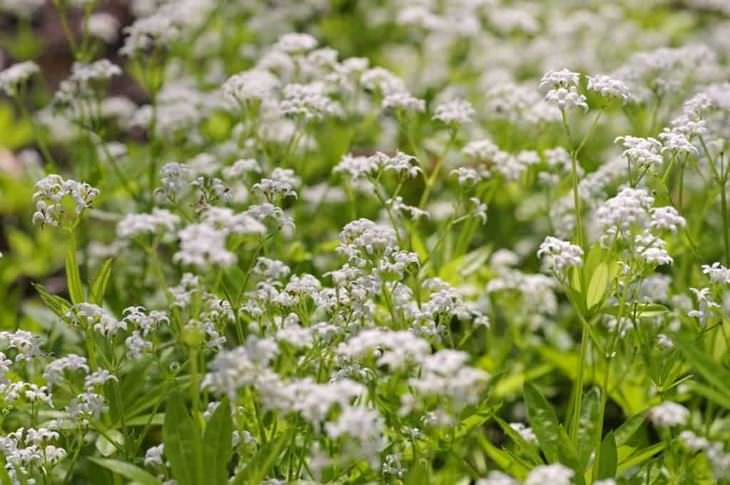Trailing Periwinkle (Vinca Minor)
This plant yields beautiful periwinkle blossoms that release a lovely scent. If left unattended, it will quickly spread throughout the garden. Carefully monitor its growth though so it won't spread into other areas of your garden. The plant is great because it will grow just as strong and dense in full sun, or partial shade, making it an excellent plant to place at the base of your trees or on top of a rock wall, where it will cascade down like a waterfall.
Dragon's Blood (Red Sedum)
Dragon's Blood loves the sun. It boasts a beautiful deep red color which develops more brilliantly the more sun it absorbs. When it's fully established it can stand up to 8-inches tall, becoming a wonderful perennial. It grows quickly and will spread thickly throughout the yard. It is an extremely hardy ground cover plant and will tolerate dry soil and temperature variations.
Creeping Phlox (Phlox Subulata)
This low-lying ground cover plant produces flower blossoms in an array of outstanding colors. This particular species of ground cover plant spreads faster than the other plants mentioned on this list. So it needs to be trimmed regularly, especially if you are using it along a pathway or as a border.
Golden Creeping Jenny (Lysimachia Nummularia)
This rugged ground plant thrives, especially in wet areas. It will grow in partial shade, but, planting it in an area with full sun, provides it with more vibrant colors. It also has long trailing stems, round chartreuse leaves, and vibrant yellow flowers. This plant can quickly cover large areas, choking out weeds and pulling out roots along its stems.
Mazus (Mazus Reptans)
This cover plant is low-maintenance. This plant performs best when planted in partial shade and will also grow in full shade. If planted in mild climates, it will remain green throughout the year and will begin to bloom in early spring. If you live in a tropical environment, it is essential you keep the mazus moist during hot weather.
Tufted Creeping Phlox (Phlox Stolonifera)
This plant is native to North America and prefers to be planted in partial sun with moist soil. It is part of the phlox subulata and easy to grow perennials family. This needle-like evergreen leaves form a dense mat across the ground to efficiently suppress any weeds. It produces small pink or white flowers in the early spring and can reach up to 12-inches in height.
Creeping Thyme (Thymus Serpyllum Coccineus)
Red creeping thyme is tolerant of heat, as well as being drought tolerant. It grows close to the ground and thrives in full sun. It is ideal for planting around stepping stones, or along borders. In the spring, it enhances your yard with a deep green color, erupting into gorgeous crimson flowers in the summer. In addition, because it grows close to the ground, it chokes out weeds.
Big Root Geraniums (Geranium Macrorrhizum)
Big root geraniums need to be planted in well-drained soil which help kill fungus gnats and thrive in dry to medium moisture and full sun. They can grow to 12-inches in height and form a thick, weed-resistant ground cover. In late spring and early summer, the plant transforms into beautiful purple-pink flowers with inflated red calyces blooms. Try apple geraniums as they are very drought tolerant ground cover plants for hot areas.
Bearberry (Arctostaphylos uva-ursi)
The bearberry can be planted in dry, sandy, and rocky soils. It is a hardy winter plant that is slow-growing. Typically, it grows between 6 to 12 inches high and 3 to 6 feet in width. The plant begins to bloom in early spring with miniature, drooping, white or pink flowers, transitioning into rounded, berry-like fruits in August and September.
Sweet Woodruff (Galium odoratum)
This plant flourishes in densely shaded areas, making it the perfect perennial and ground cover plant to have under trees and shrubs. The plant will add interesting textures to your yard with its star-shaped whorls of leaves and fragrant lacy white flowers. Once it becomes well established, maintaining it is simple. Simply add some Epsom salt, but generally speaking, you won't need to fertilize it and will only have to water it in times of drought.


